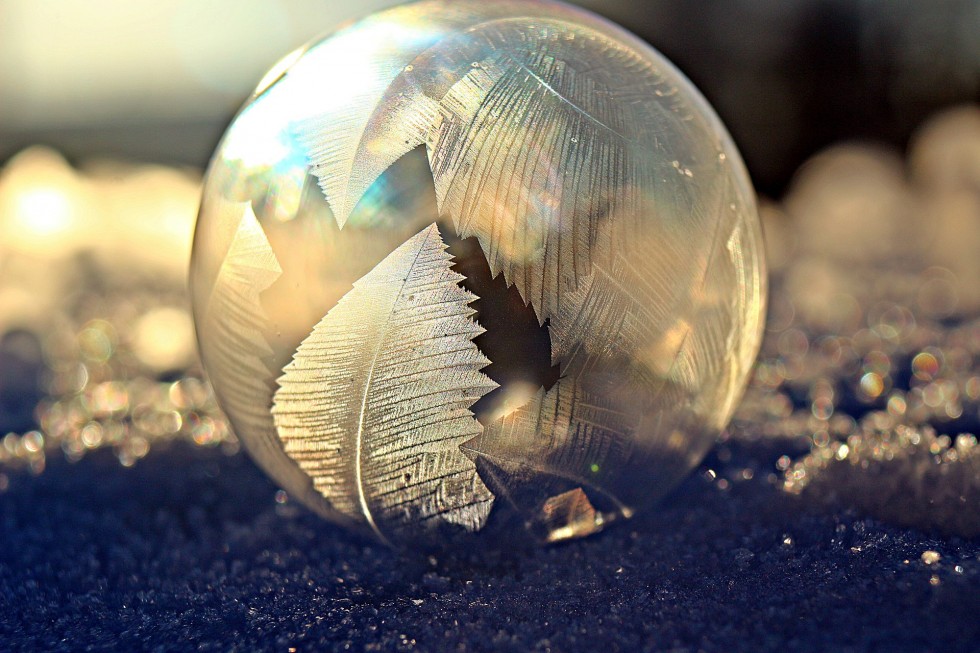Even though it’s not that cold outside now, it’s the perfect time to take the problem of the frozen water pipes in your handy hands and prevent its occurrence.
When pipes freeze, the household suffers a bunch of difficulties. The first problem and the most obvious sign that indicates frozen waterline is the lack or absence of running water coming through the faucets when the temperature outside is below 32 degrees Fahrenheit (the point when water starts freezing) . And when that suddenly happens, you can’t go on with your daily life and complete some of the basic tasks and routines like taking a shower, brushing your teeth, doing the dishes and laundry, going to the bathroom, etc.
The second and the most dangerous issue that should worry you when you notice the indicator described above is the possibility of a pipe burst. The matter is that the water that keeps coming through your waterline gets stopped at the point when the pipe froze (not the actual pipe, but the water in it). As that happens, the pressure in pipes continues to build up until the pipe can’t withstand it and bursts. That will cause significant water loss (which will show up in your enormous water bill), costly plumbing repairs and maybe even house flooding.
As frozen pipes cause major damages to your house and family budget, requiring a plumbing overhaul, the best thing you can do to avoid those troubles is to carry out a couple of pipe protection and winterization measures in mid-late fall before the lower temperatures hit the ground and your water line.
10 tips on how to keep water pipes from freezing
-
Determine the pipes you need to look out for
Those would be the pipes at the exterior walls and pipes, which are directly exposed to the outside cold if they lack proper insulation. The ones that run through the non-inhabited and unheated basements and attics, where the air gets significantly colder in the wintertime, require extra attention as well.
-
Don’t feel safe if you’re living in a warmer climate
Obviously, if your winters are more like colder summers, there’s no need to worry about frozen pipes. However, people who live in slightly warmer states, which still might experience sudden temperature drops and frosts, need to ensure necessary protection to their water line, as essentially pipes don’t get it in such areas.
-
Take care of your swimming pool
If there’s a pool in your backyard, you’ll have to drain the water in the basin and its water lines, as well as cover the pool for winter before the weather starts getting too cold and frosty.
-
Don’t forget about sprinkler systems
If you have a sprinkler system for your lawn or vegetable garden, you need to drain and winterize it as well. You may either entrust that task to sprinkler contractors or carry out the required measures following the manufacturer’s guidelines. Have that finished before the first nighttime frosts start hitting the ground.
-
Put your garden hose away
Your garden hose is one of the surprise reasons of the frozen pipe explosions. If you forget to put it away for winter, it might freeze, cause the pressure buildup in the interior pipes and make them burst. Thus, as soon as you stop using your garden hose in fall, remember to disconnect, drain it, shut off the valve leading to the garden hose and put the hose into its winter storage. Don’t forget to drain the outside spigot and protect it with a faucet insulator.
-
Inspect the problem areas
Check the water line in your basement and other unheated or poorly heated areas of your house (including garage), examine the condition of water pipe’s insulation, and, if you notice any damage or signs of its deterioration, get a plumber to fix this problem before it turns into a freezing catastrophe. In addition to that, try to keep those areas as warm as possible throughout the cold season. Attic and basement insulation are recommended.
-
Pipe insulation
Let the plumber upgrade the outdated foam insulation on your pipes with the thermostatically controlled heat tape, which is designed to withstand even the lowest temperatures typical for the moderately cold climates. It’s quite an investment, but this kind of protection and its durability is worth spending money on.
-
Look out for the ‘cold walls’
Even the slightest mold appearance on the so-called ‘cold walls’ (the ones that lack high-quality insulation or are subject to more significant weather influence) may indicate pipe issues. Consider spending some money on the professional relocation of those pipes or increase the level of their insulation. Leave a plumbing request now
-
Release the pressure
During the extreme temperature drops, make sure to open your faucets a little bit to let the cold water drip through them and release the pressure building up in the pipes.
-
Keep the temperature up
If you leave the house for a few days, don’t program your thermostat for lower than 55oF to prevent the water in the pipes from freezing.
Finally, if you see and frost buildup and any bumps on your pipes or if the water stops running through your faucets when the outside temperatures are below the water’s freezing point, you need to read these signs as the indicators of frozen pipes and quickly reach out to an experienced licensed plumber from HireRush.com to get them thawed before they burst.






I totally agree with what you said to remove the hose from the valve when not in use especially during the winter to prevent water damage or from your pipes bursting. Not removing the hose can increase the possibility of your hose freezing which would eventually increase pressure to build up and explode. If this happens, you would most likely need to contact a professional to get your pipes fixed. It’s better to be safe than sorry. I would make sure to keep this in mind. Thanks.